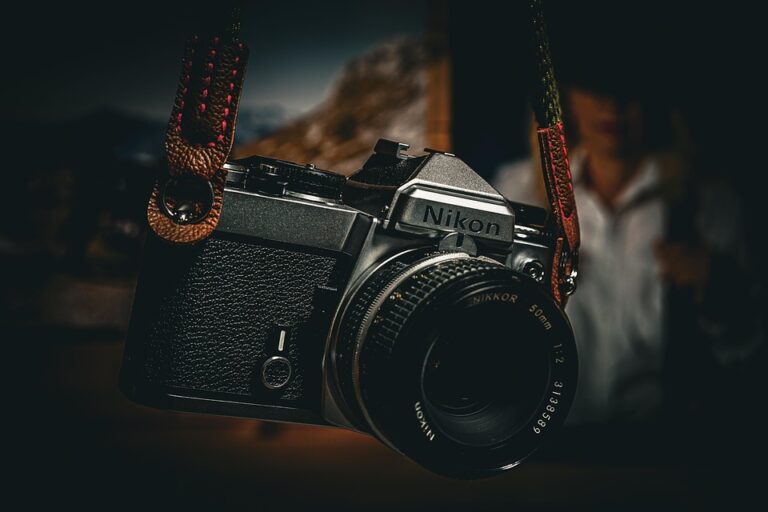Capturing the Magic of Night: A Guide to Travel Photography
Nighttime travel photography offers a unique opportunity to capture stunning images that highlight the beauty of illuminated landscapes, bustling city streets, and the tranquility of nature after dark. As we delve into this awe-inspiring genre, we will explore essential techniques, tools, and tips for capturing the magic of night with your camera.
Understanding the Power of Night Photography
Travel photography is not just about showcasing destinations but also about telling stories through images. When the sun sets, the world transforms, and so do the subjects of your photographs. From the shimmering lights of a city skyline to the ethereal glow of the stars above, nighttime photography provides an intriguing playground for creative exploration.
Current Trends in Nighttime Photography
According to a recent study by the Photography Community, the demand for night photography tutorials surged by 35% in 2022, indicating a growing interest among travel photographers looking to expand their repertoire. Furthermore, a survey by The Camera Store found that 65% of travel photographers consider night shots integral to their portfolios, emphasizing the genre’s importance.
Essential Equipment for Nighttime Travel Photography
Capturing the magic of night requires special tools and techniques. Here’s a list of essential equipment that will elevate your nighttime travel photography:
1. A Sturdy Tripod
- A sturdy tripod is crucial for stabilizing your camera and preventing blur caused by long exposure times. Look for lightweight, portable options that are easy to carry.
2. Fast Lenses
- Lenses with large apertures (f/2.8 or wider) allow more light to enter the camera, resulting in sharper images with less noise in low-light conditions.
3. Remote Shutter Release
- A remote shutter release can help you avoid camera shake during long exposures, ensuring that your images are crystal clear.
4. Wide-angle Lens for Landscapes
- To capture expansive views of cityscapes or vast night skies, a wide-angle lens (e.g., 14-24mm) is highly beneficial.
5. Good Quality Camera
- While any camera can capture night photos, those with better low-light performance (like DSLRs and mirrorless systems) lead to more satisfying results.
Mastering Techniques for Stunning Night Photography
Once you’ve gathered your equipment, it’s time to put those essentials into practice. Here are several techniques to help you succeed in nighttime travel photography:
Exposure Settings and Techniques
- Slow Shutter Speed: Use slower shutter speeds (1-30 seconds) to capture light trails and brightens the night scene. Experiment with exposure times to achieve the desired effect.
- Manual Mode: Get comfortable using manual settings instead of automatic modes to control the aperture, shutter speed, and ISO for more creative versatility.
- High ISO Settings: While high ISO settings can introduce noise, modern cameras handle this better than ever. Experiment with ISO 800-3200 to find the right balance between brightness and clarity.
Composition Tips
- Incorporate Foreground Elements: Use foreground elements to add depth to your compositions. This could be anything from a silhouette of a tree to a city landmark.
- Rule of Thirds: Apply the rule of thirds to create a more balanced composition. Position key elements along the lines or intersections within your frame.
Example of Success: The Golden Gate Bridge
Consider the iconic Golden Gate Bridge in San Francisco as an example. During the evening, its majestic towers are illuminated against the night sky, while fog rolls in from the Pacific Ocean. By using a slow shutter speed combined with a tripod, photographers can create dreamy images that capture both the motion of the fog and the striking architecture. This artistry transforms a standard travel photograph into an unforgettable scene, showcasing the significance of mastering nighttime travel photography.
Final Thoughts and Resources
Capturing the magic of night through travel photography not only elevates your portfolio but also allows you to portray destinations in a new light. As you experiment with your skills, remember to embrace the unexpected moments that happen after sunset. Whether it’s the bustling nightlife of an urban landscape or the serene ambiance of a quiet town, there’s a story waiting to be told.
For more insights into travel photography practices, check out our articles on The Basics of Landscape Photography and Essential Gear for Every Traveler. Additionally, for tips on how to edit your nighttime photographs, refer to Photography Life here.
By integrating these techniques and tips into your photography routine, and by keeping abreast of trends, you’re sure to enhance your nighttime travels, capturing breathtaking moments that resonate with viewers around the world. Happy shooting!
Images for Your Article:
-
Image 1: Night Cityscape
Alt Text: Travel Photography of a vibrant city skyline at night.
- Image 2: Starry Sky
Alt Text: Travel Photography capturing a breathtaking starry sky over a landscape.


